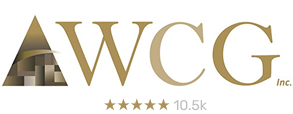
Business Advisory Services
Everything you need to help you launch your new business entity from business entity selection to multiple-entity business structures.
Hey - Our site just had a makeover and we are sorting through the hiccups!
Hey - Our site just had a makeover and we are sorting through the hiccups!

Everything you need to help you launch your new business entity from business entity selection to multiple-entity business structures.

Designed for rental property owners where WCG CPAs & Advisors supports you as your real estate CPA.

Everything you need from tax return preparation for your small business to your rental to your corporation is here.

WCG’s primary objective is to help you to feel comfortable about engaging with us
Posted Monday, September 17, 2018
Table Of Contents
Oftentimes business owners want to put away a ton of money in individual 401k plans, but cannot due to inherit limitations within the plan. Or business owners want to keep most of the plan money for themselves, which is shocking yet natural. For example, to have the company make a 10% profit sharing contribution, every eligible employee will also receive a 10% contribution which is usually undesirable. You only thought having a staff was a pain because of drama and turnover. Add this dilemma to the list.
You work hard to make money, and you shouldn’t have to work too hard to keep most of it. There are turbocharger kits you can add to your normally aspirated 401k plan. These usually work best with an underlying safe harbor 401k plan. Here we go-
A profit sharing plan based on age allows older employees to receive more of the profits than younger employees (hence the tricky name of age-weighted). Another way to look at this is to consider those closer to retirement possibly needing the most assistance in saving for retirement. This also makes sense since older employees are usually more valuable, and therefore profit sharing plans can be used to discriminate in their favor.
The new comparability profit sharing formulas take age-weighted formulas one step further by grouping certain employees together such as officers, executives, clerical, etc. Officers are given a higher portion of the profit sharing, and within the officer group the older employees are given a higher portion. A double shot. For example, a crusty officer will have a much larger contribution than a new administrative assistant.
In a real life case that WCG (formerly Watson CPA Group) worked on, a husband and wife business with over $600,000 in net profits were able to keep 75% of all plan contributions. Read more in Chapter 12 of our book on small business retirement including individual 401k plans here-

Click here to maximize your 401k with options like profit sharing or cash balance plans effortlessly.
If the age-weighted or new comparability profit sharing plans supercharge a 401k plan, the defined benefits pension and cash balance plan turbocharges it. We can hear gear heads moaning all over the country above turbo and super charging your engine. Regardless, the defined benefits pension and cash balance plan adds a ton of meat to your 401k platter. Here we go.
A defined benefit is in contrast to a 401k plan since a 401k plan is a defined contribution. A defined contribution plan specifies the amount going into the plan and has nothing to do with how much will be available when you start taking withdrawals. It could be $0 or millions. A defined benefit is a calculus where some future benefit is defined, and is usually a stream of payments similar to an annuity.
A cash balance plan is a form of a defined benefits pension, with one major difference. The participant can see his or her account balance grow over time similarly to an IRA or 401k plan. A cash balance plan can be considered a hybrid since it does not rely on formulas and salary histories although it falls under a defined benefits umbrella by definition.
Similar to age-weighted and new comparability profit sharing plans, cash balance plans use a person’s age to determine the amount that can be contributed and use actuary consultation to defend the plan’s discrimination.
Some quick examples- a 50 year old could put away $201,000 which saves about $90,450 in taxes. A 40 year old could do $136,000 and save over $61,200 in taxes. Here is the 2018 table-
| Age | 401k Plan | 401k Plan w/ Profit Sharing |
Cash Balance | Total Deferral |
Tax Savings at 45% (fed + state) |
| 70 | 24,500 | 61,000 | 329,000 | 390,000 | 175,500 |
| 65 | 24,500 | 61,000 | 266,000 | 327,000 | 147,150 |
| 60 | 24,500 | 61,000 | 254,000 | 315,000 | 141,750 |
| 55 | 24,500 | 61,000 | 194,000 | 255,000 | 114,750 |
| 50 | 24,500 | 61,000 | 148,000 | 209,000 | 94,050 |
| 45 | 18,500 | 55,000 | 113,000 | 168,000 | 75,600 |
| 40 | 18,500 | 55,000 | 87,000 | 142,000 | 63,900 |
| 35 | 18,500 | 55,000 | 66,000 | 121,000 | 54,450 |
| 30 | 18,500 | 55,000 | 51,000 | 106,000 | 47,700 |
The maximum contribution into a 401k for 2019 is $19,000 employee deferral plus $37,000 company contribution for a total of $56,000. We’ll update shortly.
Another concern is controlled groups. If you think you are clever and create a holding company to only offer retirement savings plans to certain employees (like your family), the IRS says No. There are controlled group rules where a holding company that controls another company must offer the same retirement programs for both companies.
There are all kinds of exotic stuff out there. Be careful. If it sounds too good to be true, check it out. Do your research. Talk to us. Yes, there are several legitimate yet exotic plans out there. A lot of them use life insurance as the vehicle. Life insurance has many unknowns and can prove difficult to tease out the problems or issues. And with life insurance there must be an insurable interest by the policy owner and some of the life insurance-based plans cannot be used in a pass-thru entity such as S Corporations and disregarded entities such as single member LLCs.
Here are some things that might be a good fit for you and your business
You can also set up an employee stock ownership plan (ESOP) where employees can purchase company stock over time, and the stock is held in trust. A cool feature is the tax deferral of this system- the employee-owned portion of the company profit’s is added to the ESOP’s overall asset balance, and is only taxed when the employee makes withdrawals similar to an IRA. Check out the National Center of Employee Ownership here and also our very own “poor-man’s” ESOP plan that we are implementing here at WCG (formerly Watson CPA Group)
Internal Revenue Code Section 79 offers huge deductions of policy premiums and instant tax savings. A Section 79 plan is where life insurance is offered as a group policy, but employees are able to obtain more benefits that are taxable as income. But, there is cash value to the policies that allow for borrowing in the future. There is one inherit problem- when a life insurance policy for a company under ten employees is underwritten, no medical exam is necessary which means the policy has high risk. And to balance that, the policy will have poor cash accumulation. Short-term gains, potentially long-term failures. Are all Section 79 plans bad? No. Just do your homework and ask those pointed questions.
If you have high property and casualty insurance needs, you can create another corporation that is essentially in the insurance business by collecting premiums from your primary company and investing those premiums into quality investments. The primary company gets a tax deduction since insurance premiums are an expense, and if the premiums are less than $1.2 million per year, the captive insurance company only has to pay taxes on the investment income. The captive insurance company might also be able to take out a key-person life insurance policy as well. As you can imagine, there a bunch of hoops to jump through and lots of due diligence, but a captive insurance company might prove worthwhile.
These programs are similar in the sense that life insurance is used to retain key employees by controlling the access to the cash value. The tax deferral or tax savings might not be available with type of arrangement, and depending on how it is setup, the payout to the beneficiary might be taxable as well. This is very complicated, and your garden variety financial planner might not be comfortable with these. Your best bet is to speak directly to an advisor who works for a life insurance company such as Transamerica, Northwestern Mutual, New York Life, etc. Or at the very least get a second opinion.
Again, do you homework and ask around before jumping into a life insurance-based product. They have their place, and they can provide huge tax savings especially during high marginal rate tax years. But not all products and plans are the same.
Table Of Contents

Tax planning season is here! Let's schedule a time to review tax reduction strategies and generate a mock tax return.

Tired of maintaining your own books? Seems like a chore to offload?
Did you want to chat about this? Do you have questions about Individual 401k Plans? Let’s chat!
The tax advisors, business consultants and rental property experts at WCG CPAs & Advisors are not salespeople; we are not putting lipstick on a pig expecting you to love it. Our job remains being professionally detached, giving you information and letting you decide within our ethical guidelines and your risk profiles.
We see far too many crazy schemes and half-baked ideas from attorneys and wealth managers. In some cases, they are good ideas. In most cases, all the entities, layering and mixed ownership is only the illusion of precision. As Chris Rock says, just because you can drive your car with your feet doesn’t make it a good idea. In other words, let’s not automatically convert “you can” into “you must.”
Let’s chat so you can be smart about it.
We typically schedule a 20-minute complimentary quick chat with one of our Partners or our amazing Senior Tax Professionals to determine if we are a good fit for each other, and how an engagement with our team looks. Tax returns only? Business advisory? Tax strategy and planning? Rental property support?

Everything you need to help you launch your new business entity from business entity selection to multiple-entity business structures.

Designed for rental property owners where WCG CPAs & Advisors supports you as your real estate CPA.

Everything you need from tax return preparation for your small business to your rental to your corporation is here.

WCG’s primary objective is to help you to feel comfortable about engaging with us

